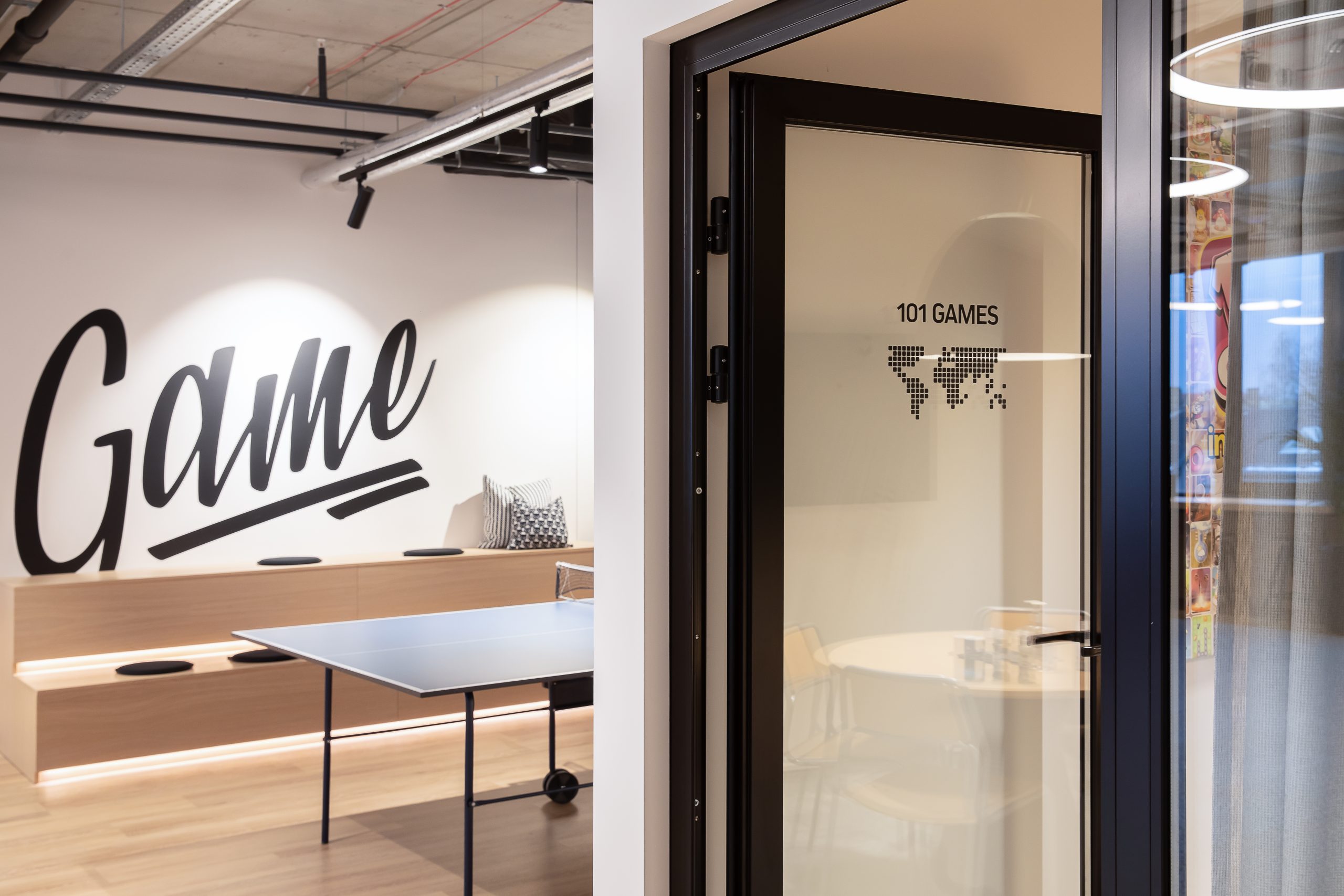The way we play video games is evolving all the time. Writing lines of code to play Commodore 64 games and blowing into NES or Mega Drive cartridges are concepts that an entire generation of gamers now finds alien.
To keep up with new trends and technologies, video game developers have had to evolve and adapt, whether it’s the growing popularity of mobile games and digital content or developing software for the latest hardware.
Moving from a student to a developer seemed like a natural progression for someone who grew up with a passion for video games. Nordcurrent, the game development studio I co-founded with my husband Michail and his brother Sergej, was founded 20 years ago. We’ve developed and published games for the Gameboy Advance, PlayStation 1 and PlayStation 2, Nintendo DS, Nintendo Wii, and mobile devices over the years, with some of them becoming major franchises and selling millions of copies.
As you might expect, we’ve learned a lot from watching the video game industry evolve over the last two decades. To remain competitive, we’ve had to adapt and stay on top of the latest trends, but more importantly, we’ve had to create great games that resonate with players.
The transition from physical to digital
The transition from physical to digital game formats has been one of the most significant changes in the industry.
Mobile games, with the exception of gaming mobiles like Nokia’s N-GAGE (RIP), have always been digital and purchased or downloaded from app stores. The mobile industry pursued distribution, while console owners purchased new or used games from gaming stores or online retailers. Simultaneously, digital distribution services such as Steam were gaining popularity among PC gamers.
The video game console market eventually caught up. Digital marketplaces like Xbox Live and the PlayStation Network Store began to gain traction.
Simultaneously, the rise of smartphones provided an opportunity for developers to enter a completely new market on an equal playing field. The potential success of digital platform games was unknown, but unlike previous generations, the entry barriers were removed. It was an exciting time that we knew we had to seize.
Prior to this change, Nordcurrent and many other developers believed that entering the market was always extremely difficult. To make an impact, a game must have a large amount of resources behind it, or it must be a well-known property in order to capture the attention of publishers and make it into the market.
With these constraints removed, the transition from physical to digital disrupted the industry, allowing games to explore new, ambitious, and inventive ideas.
I recall the transition to digital with fond memories, recalling how simple the digital market was compared to competing in the console space. In most cases, games can be distributed without any complications. Developers had two options: free-to-play or pay-to-play games. Free-to-play games would contain advertisements, while pay-to-play games would not.
Nowadays, the digital market is more complicated due to higher entry barriers. In contrast to the transition from physical to digital, developers must now adhere to previous market expectations and have a budget for the following sections in order for their game to be successful:
- User Acquisition
- Marketing
- In-game Analytics
The rise of mobile games
Mobile games have grown in importance in the video game industry, accounting for more than half of global gaming revenue. Their popularity is growing as companies like Sony, Microsoft, and Nintendo expand their presence in the mobile game market. Mobile games are easier to monetise than most PC and console games due to the variety of monetisation channels available.
Mobile games, which first appeared in the mid-1990s, were primarily viewed as a way to entertain people on the go. They are now a necessary component of the gaming ecosystem, with more people playing them than console games. The rise of mobile games is due not only to the convenience of playing them on your phone, but also to the fact that they are less expensive, more accessible, and offer a greater variety of gameplay than PC and console titles.
101 Games, a title we ported from the Nintendo DS and Wii – though we did make some changes to make the game more suitable for a mobile audience – was our first major success on mobile.
This primarily entailed adapting the game to meet the needs of casual gamers who could pick up and play the game without prior gaming experience. The title’s simple and engaging gameplay ensured that a diverse range of audiences could participate and play it. The success of 101 games inspired us to develop other casual games, which led to the creation of the time-management cooking sim Cooking Fever, which has now received over 450 million downloads.
Evolution of gaming audiences
Although some gamers still believe that mobile games aren’t “real” games (the growing popularity of mid-core titles from major publishers begs to differ), mobile games are a vital part of the industry. Looking at the market, almost all of the successful gaming companies make mobile games, and as a result, the gaming industry is more inclusive and accessible than ever.
Many mobile games’ success can be attributed to the fact that they appeal to a large demographic of players who consider themselves gamers but lack the time to devote to console or PC games. Many mobile gamers want something fun to do in their spare time that they can take with them wherever they go.
In Cooking Fever, for example, players are divided into three age groups: 18-24, 25-45, and 45+, with females accounting for roughly 70% of the total.
Importance of LiveOps for successful mobile games
Gaming has evolved into a service-based industry. Video games are no longer just played; they are also experienced. Previously, video games were primarily about gameplay and graphics, but there is now a growing demand for new content to be added to a game after it has been released, a practice known as LiveOps.
This has also resulted in new ways of monetizing games, as new content is made available via in-app purchases, which frequently account for the majority of revenue for mobile games. Players’ expectations have shifted as well; there is a greater demand for developers to create new content to keep players engaged, whether that content is new characters, levels, story missions, or items.
We frequently compare the gaming experience to the film industry: users eagerly await the release of a new game update so that they can consume the content within the first week and then await further content updates.
We are now much more proactive in our content approach because we recognize the need to continuously provide users with engaging and valuable content.
This is a departure from our previous development cycle, which was very front-loaded, and the games would include the full spectrum of attached content. Now, the development team is constantly analyzing the game’s success and looking for new ways to improve it. This is no longer limited to mobile games, but also to console and PC games.
Finally, mobile games and apps have been at the forefront of this change, and many of the post-launch changes made to AAA console/PC games have been inspired by lessons learned in the mobile market, whether it’s battle passes, in-game collaborations, or one-of-a-kind events.
The prominence of collaborations and influencer marketing in video games
Making a great video game isn’t always enough. That video game requires advertising and promotion to reach the right audiences, and influencer marketing and collaborations are now an important part of many mobile game companies’ advertising strategies.
Influencers can also help mobile game companies reach new audiences. But when I say influencers, I don’t just mean traditional social media influencers with massive followings – we are also the community of our games.
Aside from traditional social media platforms like Facebook and Twitter, video game audiences traditionally keep the game alive through community discussions on Reddit or Discord.
One of the most important lessons we’ve learned as game developers is to support and engage with the communities that surround your titles. The information they provide allows you to better understand how your games are performing and what, if any, changes need to be made to keep them satisfied.
We consider our game’s players to be experts in their fields because they can pragmatically suggest updates, features, and collaborations, which are then forwarded to the development team for feedback. This collaborative approach is critical to our studio’s future success.
We’ve embraced collaborations with other brands in recent years to expand the reach and appeal of our titles, in addition to looking to influencers and our community to improve our games. This has included collaborations with global brands such as Coca-Cola, Hard Rock Cafe, and FC Barcelona.
The mobile game market is known for utilizing branded collaborations in its LiveOps, and we believe we’ll see more collaborations in the future as brands look to expand their presence in gaming spaces.
What’s next for Nordcurrent
We are still a family-owned business based in Vilnius after 20 years and have published over 50 games for various platforms. Our most notable success was Cooking Fever, which spawned dozens of cloned games and spawned an entire sub-genre of cooking games. We now have over 250 employees and will continue to grow our team as part of our mission to create amazing games that are enjoyable to all. We have two studios in Ukraine and a new one in Warsaw to help employees affected by the war.
Nordcurrent creates games loved by millions. Visit Nordcurrent.com to learn more about our games or to join our team’s mission to create the best games in the world.


